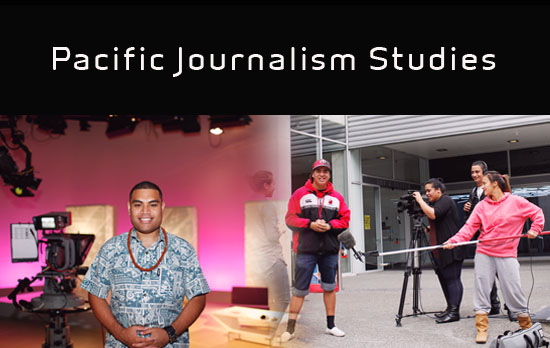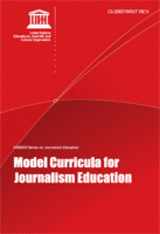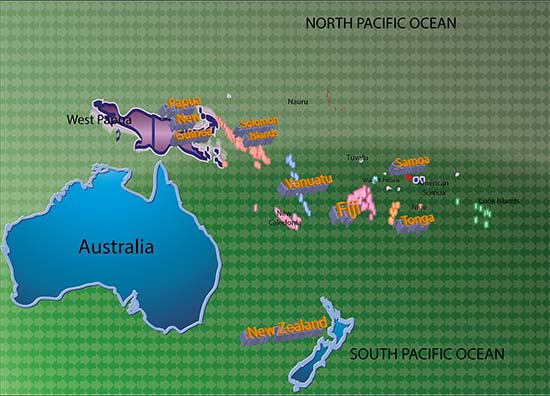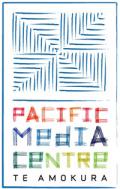
In Papua New Guinea in 2009, UNESCO-hosted the first-ever regional journalism schools conference. One of the resolutions that came out of the conference was to establish a regional resource for programmes offered at journalism schools. The Pacific Media Centre stepped into the breach and set up the 2012 South Pacific journalism education project. This article by Rukhsana Aslam, an experienced journalism educator and author from Pakistan and a doctoral candidate at AUT University, and the resource are the result.
How effective has the UNESCO model for journalism education been in the Pacific? Has it been used as a benchmark or adopted in universities and polytechnic journalism schools in Pacific Island Forum countries (excluding Australia and New Zealand). UNESCO’s Model Curricula for Journalism Education for Developing Countries & Emerging Democracies (2007) – original title, but later changed - was published after UNESCO initiated a global consultation project on media education and strategies.
UNESCO’s Model Curricula for Journalism Education for Developing Countries & Emerging Democracies (2007) – original title, but later changed - was published after UNESCO initiated a global consultation project on media education and strategies.
The 148-page booklet examines the core of journalism education such as serving society by informing the public, scrutinising the way power is exercised, stimulating democratic debate and through these characteristics aiding political, economic, social and cultural development.
UNESCO guidelines
In its foreword, UNESCO acknowledges the “crucial role of journalism in promoting democracy” in developing countries and “urgent demand for well-trained journalists”.
However, it also notes that each emerging democracy presents its own environment and challenges for journalists in the field.
Therefore the model presented in the booklet should be taken as a guideline that once “adapted to local conditions, will lay a foundation for good journalism education”.
A good journalism education, according to UNESCO’s guidelines, should encompass the following elements:
1. A knowledge of professional skills that involve methods of knowing, recording and presenting through a number of tiers in each semester thus refining these skills in stages;
2. Critical thinking and understanding of basic research methods;
3. An understanding of broader media-related issues in society;
4. A knowledge of national and international affairs and institutions;
5. An interdisciplinary approach including a study in arts and sciences;
6. An academic knowledge of the areas that would lead to specialised beats; and
7. Partnerships with local news media.
Journalism education in Pacific countries
In principle, there is little to disagree on the above guidelines. But for the developing countries and emerging democracies, they may present several challenges. Many of them are directly related to the availability of relevant human expertise, availability of resources and a positive environment.
If the country is faced with political conflicts, constitutional restraints, social unrest or natural disasters, such journalistic ideals are over-ridden by the immediate needs of the people.
Also, the resources are limited and sometimes allocated to the other areas such as fishing and agriculture which provide the basis for the economy of many countries in the region.
Hence the Pacific institutions do not strictly follow the UNESCO guidelines but reflect them in varying degrees. The most striking aspect of journalism education in Pacific countries is the way it is adapted to the local and regional environment of the respective country.
‘Good’ j-education
In a way, it is the most important aspect of “good journalism education” as the UNESCO model suggests.
The indigenous nature of the political, social, economic and environmental problems faced by many Pacific countries is such that they need specialised and contextual journalistic knowledge and training to address them adequately.
This is particularly in the case of the polytechnic schools that offer certificate courses in journalism such as the Tonga Institute of Higher Education (TIHE), Vanuatu Institute of Technology (VIT) and Solomon Islands College of Higher Education (SICHE), which share almost similar course outlines.
A much broader approach is taken by the universities that offer degrees in journalism at the graduate and post graduate levels.
These are the University of South Pacific and Fiji National University in Fiji; University of Papua New Guinea and Divine Word University in Papua New Guinea; and the National University of Samoa.
Their journalism departments offer a diverse range of topics in journalism and boast of a range of partnerships with the local news media.
Most of them have their own student publications such as Wansolwara, the award-winning journalism student newspaper published by the University of South Pacific, Fiji.
The University of Papua New Guinea was once the headquarters of the regional UNESCO journalism programme PACJOURN.
In New Zealand, many universities offer media related degrees but only the Auckland University of Technology (AUT) offers a course in Asia-Pacific Journalism and Graduate Diploma in Pacific Journalism.
The Pacific Media Centre, which is part of AUT’s School of Communication Studies, acts as a valuable resource for information on a wide range of Pacific-related news, articles, books, journals and projects.
Pacific and Māori-related courses are also offered at the Waiariki Institute of Technology and Whitireia institute of Technology in New Zealand.
Scope to improve
Journalism education is offered in many different ways by many different organisations in many countries with different educational traditions and resources.
What is important is that there must be a balance between the practical and the academic. The local context, history and support are also important.
Journalism education in the Pacific Islands has a lot of scope to improve and expand but it has the right elements and the direction. Hopefully, the resources and expertise will follow.
The 2012 South Pacific media education project
UNESCO Pacific Office - Apia




